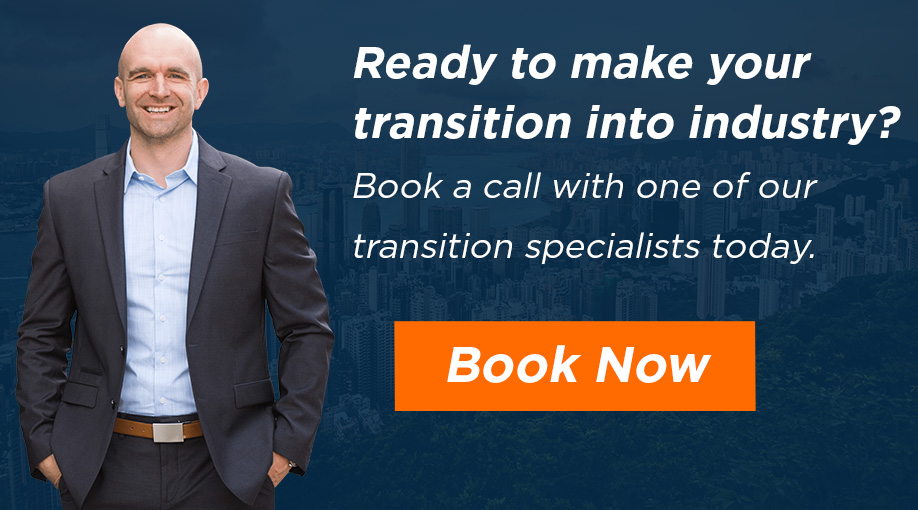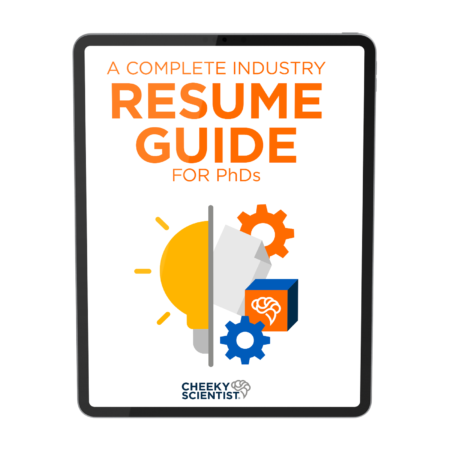If You Don’t Know These 5 Things About LinkedIn, Your Job Search Is In Trouble

There is no way to deny that LinkedIn is a must-have tool for every PhD who wants to transition into industry.
Positioning yourself on LinkedIn is one of the most powerful ways to get noticed by and start growing your network of industry professionals.
LinkedIn gives you the opportunity to reach out to people working in your target companies or locations, connect with recruiters and hiring managers, and participate from groups of like-minded professionals.
I have seen many PhDs get hired by leveraging the power of LinkedIn. Take for example the following story of a member I was recently talking to.
I just transitioned into my second industry role as UX Expert at a large pharma firm in Europe.
Once I decided to leave academia, I started networking on LinkedIn, which ended up in an opportunity to volunteer for 2 startups and built the foundation for my current network.
By leveraging my volunteer experience as industry-relevant experience, I was able to make my first transition.
About 4 months into this role, I refined my LinkedIn profile to focus on my biggest strengths and made sure to add the keywords commonly used in my targeted market.
I had found my unique selling proposition and was able to communicate it in a way that brought a lot of attention to my profile.
When I made this change, I started to get contacted by recruiters via LinkedIn and email. They still reach out to me today.
It was through one of those recruiters that I found out about my current position.
Why LinkedIn Dominates The Recruitment Landscape
Over 90% of employers and recruiters use social media to find talent. This goes from LinkedIn to Snapchat, but when it comes to filling PhD-level jobs, LinkedIn is by far the most-used social media.
Currently, LinkedIn has almost 740 million members in over 200 countries and over 55 million registered companies. So, the possibilities for networking are endless.
If you’re a highly educated person who has a technical background, no matter what that background is, employers hiring for top positions know they can find you on LinkedIn.
But, keep in mind that just going into LinkedIn, doing the bare minimum to create a profile, and expecting hiring managers and recruiters to magically find you and hire you can actually hurt your job search.
If you want to leverage the power of this social media, you need to understand how the algorithm works and what it’s looking for in high-quality candidates.
5 Things You Should Know About LinkedIn
One of the first things you need to understand is that job seekers are not LinkedIn’s main clients. The main clients are companies who pay to post their job openings.
This means that LinkedIn’s algorithm is always taking the employer’s point of view into consideration, and you should do the same.
If you understand how LinkedIn works from the moment you start planning your transition, you will increase your chances of leveraging the platform while reducing your chances of burning bridges during your job search.
Here, I will discuss 5 things most PhDs don’t know and can help them take advantage of LinkedIn.

1. There are many LinkedIn platforms
It’s likely that the only LinkedIn interface you know is the one you use to create your professional profile. This is the platform that most people use, but it’s not the only one.
For example, employers have their own LinkedIn platform, called LinkedIn recruiter, which allows them to fill positions based on three main search fields: job title, location, and skills.
If you don’t have this information front and center in your profile, you will not appear in any searches. Remember that you should always look at LinkedIn from the employer’s point of view.
So, make sure you add these three pieces of information to your headline and highlight them throughout the other sections of your profile.
2. LinkedIn is future-facing
When creating your LinkedIn profile, keep in mind that you should portray yourself as the professional you want to be, not the professional you are.
This is especially true if you are a PhD looking for their first opportunity outside of academia. Everything in your profile should prove to employers that you are an industry professional, someone they would like to hire.
So, avoid profile pictures that depict you as a student. Don’t add photos of you wearing a lab coat, posing besides your poster at a scientific meeting, or in the classroom.
Instead, add a picture in business attire, the same that you’d wear to a job interview. A picture that shows you understand industry etiquette.
The same premise that applies to images, applies to text. Don’t highlight academic terms that no industry employer will ever look for.
Things like “PhD student,” “postdoc,” the name of your university, or technical jargon relating to protocols and equipment you learned in grad school will hurt your chances of appearing on searches.
Instead, focus on the job titles you are targeting, and the most important transferable skills associated with those job titles.

Academia is your past, industry is your future, and you have to make it clear that you are committed to your transition not only in your profile but during your interactions with other industry professionals.
3. You need to let employers know you’re open for work
With hundreds of millions of people making part of the LinkedIn community, the algorithm needs to have a way to differentiate those who are actively looking for job opportunities from those who aren’t.
If you don’t let LinkedIn know that you are part of the first group, you’re not going to appear in searches, and if you do, it will be close to the bottom. The algorithm will assume that you are not interested in any open position.
So, how do you let employers know you’re open for work?
You have to go to your profile and look below your headline. There’s a button that says “open to,” once you click on it, it will ask you if you are open for work or hiring, click the first option.
This button will be turned off by default, you need to go into your profile and turn it on. This will allow you to show up in the search results much higher than you were showing up before.
Once you turn the button on, there’s additional information you need to fill out.
You can let recruiters know if you’re looking to work on site or remote, you can include your desired location, and you can decide if you want everyone in the community to know you’re open to new opportunities, or if you want this information to be available just for recruiters and employers.
You can also leave a note to employers. This message will be visible to hiring managers and recruiters once you start appearing on searches.
In this section, you should add a short text with your elevator pitch, letting them know who you are, what you want, and why they should care.
Remember to keep it future-facing and show that you understand what industry employers are looking for.
4. Carefully crafting your resume for each new job posting
The LinkedIn team is constantly refining their algorithm to make it better at finding promising job candidates and at determining which job candidates are a good fit for a specific search.
This means that the way you’re ranked in searches can change in a matter of months.
That’s why it’s so important that you keep your profile updated at all times and that you stay up to date with the changes that are being implemented to the algorithm by following LinkedIn reports.
You should also research your target companies and understand their culture because the algorithm can look for words that show you’re a good match for a specific culture when deciding how high you will appear in a given search.
This is just scratching the surface, LinkedIn puts together a talent insights report that employers have access to and can use to make decisions about how to focus their searches.
In terms of LinkedIn’s algorithm, you have to think like an employer – someone who’s trained in human resources – and what they care about.

If you can convince those people that you are what they’re looking for, you will get access to more opportunities than other candidates who are looking for similar positions.
5. It’s all about being active
At this point this might come as no surprise, but if you want to get good results when using LinkedIn, you need to be an active member.
You need to keep your profile updated at all times. In fact, the best approach is to make little tweaks daily.
You also need to interact with other members. This means logging into your profile everyday, liking posts, commenting on posts, and engaging with other members.
This will not only show the algorithm that you’re a committed candidate and increase your ranking in searches, it will also help you create a network of like-minded professionals.
Once you start creating a rapport with other members, start a conversation through private messages. This can lead to informational interviews, and eventually, to a job referral.
Concluding Remarks
With over 740 million members and 55 million registered companies, using LinkedIn to advance your career should be a no brainer, but you can’t expect to go in one day, create a lousy profile, and be found by recruiters and hiring managers looking to fill top-level positions. If you want to use LinkedIn to your advantage, you need to understand how the algorithm works and put yourself in the shoes of employers – who use special LinkedIn platforms that are different from the one you’re familiar with. LinkedIn is future-facing, so your profile should portray you as the professional you want to be, not the professional you are. To ensure you appear at the top of searches, let employers know you’re open to work and keep up to date with how the algorithm works. Finally, don’t forget to be active and build your network. If you follow these 5 steps, you will get better results than your competitors when using LinkedIn.
If you’re ready to start your transition into industry, you can apply to book a free Transition Call with our founder Isaiah Hankel, PhD or one of our Transition Specialists. Apply to book a Transition Call here.

ABOUT ISAIAH HANKEL, PHD
CEO, CHEEKY SCIENTIST & SUCCESS MENTOR TO PHDS
Dr. Isaiah Hankel is the Founder and CEO of Cheeky Scientist. His articles, podcasts and trainings are consumed annually by millions of PhDs and other professionals in hundreds of different countries. He has helped PhDs transition into top companies like Amazon, Google, Apple, Intel, Dow Chemical, BASF, Merck, Genentech, Home Depot, Nestle, Hilton, SpaceX, Tesla, Syngenta, the CDC, UN and Ford Foundation.
Dr. Hankel has published 3X bestselling books and his latest book, The Power of a PhD, debuted on the Barnes & Noble bestseller list. His methods for getting PhDs hired have been featured in the Harvard Business Review, Nature, Forbes, The Guardian, Fast Company, Entrepreneur Magazine and Success Magazine.
More Written by Isaiah Hankel, PhD































